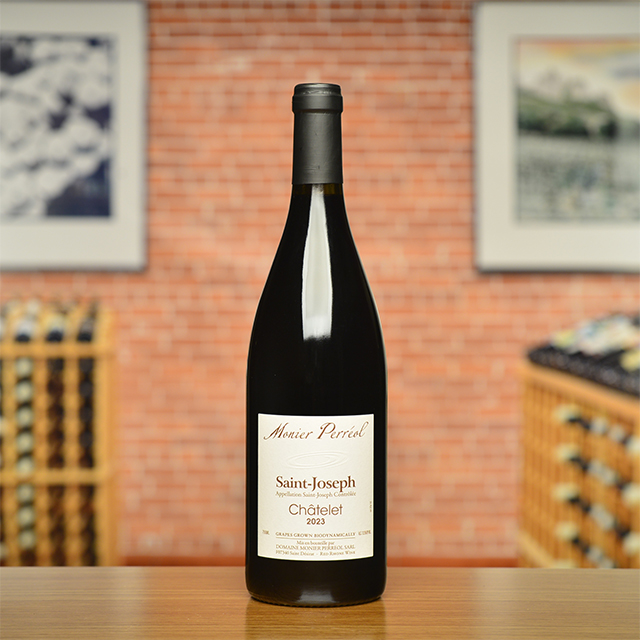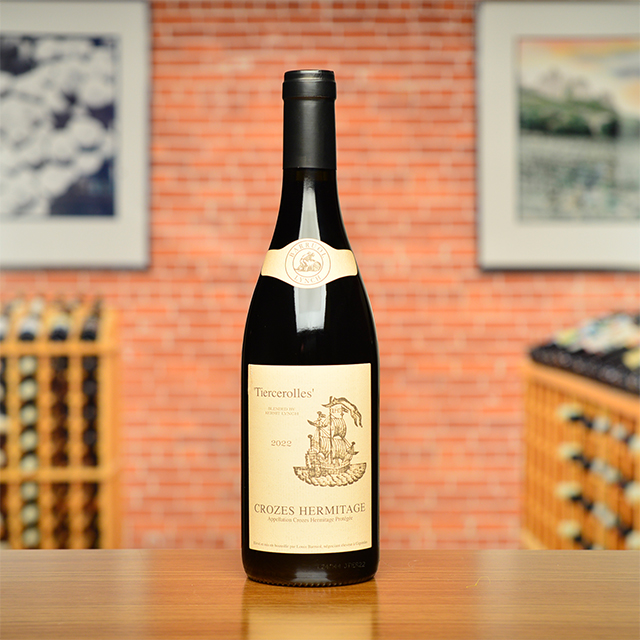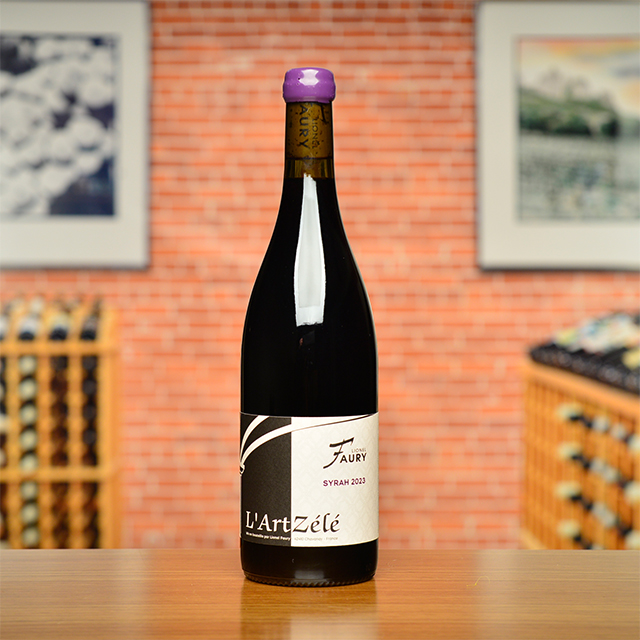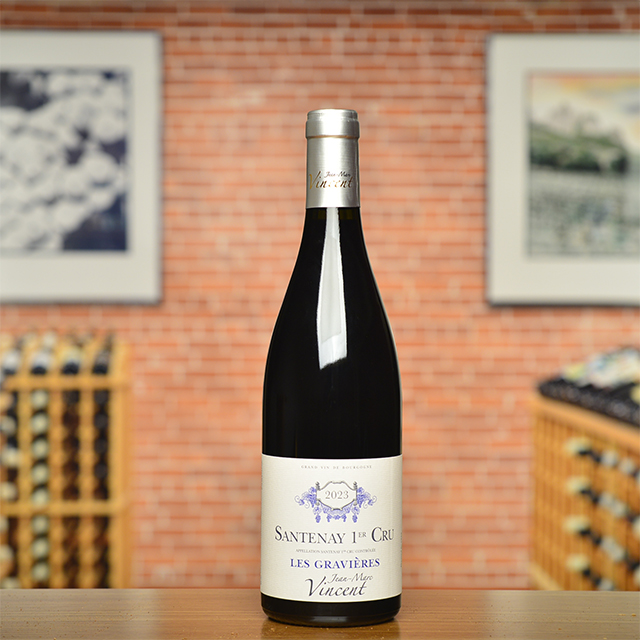Notify me
2017 Hermitage Rouge “La Pierrelle”
Barruol / Lynch
Many say the small hill of Hermitage is the spot where Syrah reaches its absolute greatest heights, and some recent four-figure price tags of a few famous cuvées at auctions appear to reinforce that notion. Yet here is a wine that seems to not notice or care about any of that. Bold and mysterious, with a velvety texture and a certain rusticity, this wine seems to be of a different, bygone time, and above the fray of modern squabbles.
—Chris Santini
| Wine Type: | red |
| Vintage: | 2017 |
| Bottle Size: | 750mL |
| Blend: | Syrah |
| Appellation: | Hermitage |
| Country: | France |
| Region: | Northern Rhône |
| Producer: | Barruol / Lynch |
| Winemaker: | Louis Barruol |
| Vineyard: | 30 - 50 years |
| Soil: | Granite |
| Aging: | Aged on average for 15 months in barrel, no new barrels - barrels are 1 or 2 years old |
| Farming: | Lutte Raisonnée |
| Alcohol: | 14.5% |
More from this Producer or Region

2023 Condrieu
France | Northern Rhône
André Perret crafts white wines of mesmerizing texture, density, and vibrant flavors of stone fruit, jasmine, tropical fruit, orange zest, and so much more.

2023 Crozes Hermitage “Tiercerolles”
France | Northern Rhône
** New Wine Added ** This juicy, blueberry-and-leather-infused Syrah with a long finish is ready to drink tonight.

2023 Hermitage Rouge “La Pierrelle”
France | Northern Rhône
A thick perfume of dry-aged meat, smoke, and violets preface a wine that is powerful, but in perfect proportion.

2023 Saint-Joseph Rouge “Châtelet”
France | Northern Rhône
Hailing from a single vineyard high up on the hill above Saint-Désirat, at the middle point of the Saint-Joseph appellation, this cuvée dials up the fragrance and elegance of Monier-Pérreol’s Saint-Joseph.

2022 Côte-Rôtie “La Boisselée”
France | Northern Rhône
November Club Chevalier ~ Made from six vineyards that, when blended, showcase the whole of the Côte Rôtie appellation.

2021 Côte-Rôtie “Besset”
France | Northern Rhône
From the classic aromas of graphite, black fruit, and roasted spice, to the total finesse of its tannins, this is Côte-Rôtie at its best.

2020 Hermitage Blanc “La Pierrelle”
France | Northern Rhône
From vines that are more than eighty years old comes this Marsanne with magnificent floral, pit fruit, and bitter notes.

2022 Crozes Hermitage “Tiercerolles”
France | Northern Rhône
This juicy, blueberry-and-leather-infused Syrah with a long finish is ready to drink tonight.

2021 Côte-Rôtie “Les Roses”
France | Northern Rhône
Delicate and perfumed, it speaks softly, yet it has so much to say: lilies, bacon fat, spices... it could only be Côte Rôtie.

2023 Collines Rhodaniennes Syrah “l’Art Zélé”
France | Northern Rhône
If you want to experience classic flavors of northern Rhône Syrah, here is a textbook example.
About The Producer
Barruol / Lynch
Louis Barruol is an indefatigable force in the Rhône, the 14th generation in his family to be making wine in Gigondas. On what was once the site of a Roman villa, Louis’ cellars show spectacular remains of Roman vinification vats carved into the limestone. Here, Louis works with different grape varietals from the Rhône, vinifying each parcel separately. He’s taken to acting as a micro-négociant, working with top growers in the region who still work with Sérine. Producing only a few precious barrels of each cuvée, Louis is helping to save the authenticity and identity of old Côte Rôtie parcels. Together, he and Kermit blend our Northern Rhône wines and a Southern Côtes du Rhône Blanc and Rouge from a selection of Louis’ purchases.
More from Northern Rhône or France
2021 Côte-Rôtie “Les 3 Brunes”
Lionel Faury France | Northern Rhône
2022 Condrieu “Chéry”
André Perret France | Northern Rhône
2023 Vin de France Blanc “Cuvée de Louis”
Domaine Jolivet France | Northern Rhône
2023 Crozes Hermitage “Tiercerolles”
Barruol / Lynch France | Northern Rhône
2022 Côte-Rôtie “La Boisselée”
Barruol / Lynch France | Northern Rhône
2022 Saint-Joseph “Les Grisières”
André Perret France | Northern Rhône
2021 Saint-Joseph Blanc
Jean-Claude Marsanne France | Northern Rhône
2023 Hermitage Rouge “La Pierrelle”
Barruol / Lynch France | Northern Rhône
2023 Saint-Joseph Blanc “Les Ribaudes”
Lionel Faury France | Northern Rhône
2021 Saint-Joseph Rouge “L’Instinct”
Domaine Jolivet France | Northern Rhône
2015 Cornas “Chaillot”
Thierry Allemand France | Northern Rhône
2022 Saint-Joseph Rouge “L’Instinct”
Domaine Jolivet France | Northern Rhône
2021 Côte-Rôtie “Les 3 Brunes”
Lionel Faury France | Northern Rhône
2022 Condrieu “Chéry”
André Perret France | Northern Rhône
2023 Vin de France Blanc “Cuvée de Louis”
Domaine Jolivet France | Northern Rhône
2023 Crozes Hermitage “Tiercerolles”
Barruol / Lynch France | Northern Rhône
2022 Côte-Rôtie “La Boisselée”
Barruol / Lynch France | Northern Rhône
2022 Saint-Joseph “Les Grisières”
André Perret France | Northern Rhône
2021 Saint-Joseph Blanc
Jean-Claude Marsanne France | Northern Rhône
2023 Hermitage Rouge “La Pierrelle”
Barruol / Lynch France | Northern Rhône
2023 Saint-Joseph Blanc “Les Ribaudes”
Lionel Faury France | Northern Rhône
2021 Saint-Joseph Rouge “L’Instinct”
Domaine Jolivet France | Northern Rhône
2015 Cornas “Chaillot”
Thierry Allemand France | Northern Rhône
2022 Saint-Joseph Rouge “L’Instinct”
Domaine Jolivet France | Northern Rhône
Kermit once said...

Kermit once said...
For the wines that I buy I insist that the winemaker leave them whole, intact. I go into the cellars now and select specific barrels or cuvées, and I request that they be bottled without stripping them with filters or other devices. This means that many of our wines will arrive with a smudge of sediment and will throw a more important deposit as time goes by, It also means the wine will taste better.
















